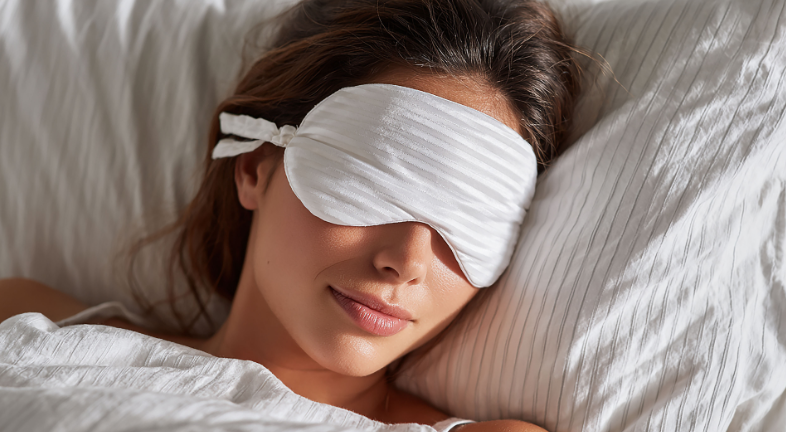
So, you’ve been thinking about straightening your teeth for a while. Maybe you’re busy. Maybe you hate the idea of having trays in your mouth all day. Maybe braces feel… well, old school.
Here’s the thing: your teeth don’t just magically line up overnight. They need gentle pressure, consistent aligner wear, and a plan that fits your life. That’s where nightonly clear aligners come in. Not a miracle. Not a replacement for all-day braces in severe cases. But for a lot of people, they’re surprisingly effective.
Now, overnight teeth aligners aren’t new, but they are trending. People want convenience, discreet wear, and minimal interference with daily life. And yes, some at-home brands, like Caspersmile , offer options specifically designed for nightwear. No fuss, no constant daytime trays, just a simple nighttime routine.
But how does it actually work? And who’s it for? Let’s break it down.
Think of them like a gym for your teeth, but only at night. Your teeth still move, still shift, still straighten. Just not under full-time pressure.
Nighttime aligners are custom-made trays you wear while you sleep. Usually 8–10 hours. Not optional. Skip nights, and you’re skipping progress. They work by applying gentle, consistent pressure. Over time, teeth adjust. Slowly. Predictably. Safely.
And yes, you can binge-watch your favorite show while your teeth do the heavy lifting. Multi-tasking level: expert.
Let’s get into the mechanics. Don’t worry, no dentist jargon here.
Here’s the truth: these trays won’t fix everything. Crowding or bite issues that are severe usually need full-time wear. Night-only aligners are best for mild to moderate cases.

Not everyone. Let’s be honest.
They’re perfect for:
So, does that mean your teeth straighten themselves while you sleep? Not exactly. They still need gentle pressure and a bit of discipline. Brands like Caspersmile make effective clear aligners for nighttime , which can easily be incorporated into your routine.
Here’s why night aligners are gaining attention:
But a quick reality check: skip nights, skip results. Night aligners are effective, but only if you wear them. Think of them like a night-shift trainer for your teeth. They work while you sleep…if you actually show up.
Before you rush out, a few caveats:
The takeaway? They work, but only if you commit.
Myth 1: You can straighten teeth overnight.
Reality: Slow, steady pressure works. Not magic.
Myth 2: They’re less effective than full-day aligners.
Reality: Slower, yes. But for mild cases, results can be just as good if you’re consistent.
Myth 3: You don’t need check-ins.
Reality: Some oversight is helpful, even if it’s at-home photos or occasional dentist visits.
Myth 4: They’re uncomfortable.
Reality: Slight pressure is normal, especially at the start. That’s how teeth move.
So, you’ve got your night aligners. Great. But here’s the reality, they only work if you actually use them. No shortcuts. No guessing. If you want results, a little effort goes a long way.
Consistency is king
Seriously. Wear your aligners every night. Miss one night and it’s like hitting the pause button on progress. Two nights? You guessed it, slower results. Your teeth need gentle, steady pressure to move. Think of it like a nightly workout for your smile. Show up consistently, and you’ll start to see change.
Clean trays regularly
Your night aligners are great as long as they are clean. Dirty aligners can trap bacteria and promote plaque. So your teeth might be straightening, but they are also slowly rotting. To avoid that, clean your aligner after every use. In the morning, when you take out your aligners, brush them with a soft-bristle brush and some lukewarm water. And keep them dry, this way you will come home to fresh aligners every day.
Stick to your plan
Night aligners only work if you wear them regularly. Missing a night is like skipping a day at the gym. You might still see some results, but it will take much longer. Wear them as recommended and be patient. Straightening your teeth takes time, not just a few nights.
Track progress
Take a quick photo of your teeth every few weeks. You’ll actually see little changes that you might not notice otherwise. If you’re using at-home aligners like Caspersmile, check your progress using their AlignerTracker app, so you don’t have to guess if you’re doing it right.
Travel tips
Life doesn’t stop just because you’re straightening your teeth. Keep a small, sturdy case handy whenever you travel. Trays are easy to lose or forget in a bag, and one missed night on a trip can slow progress. Pack smart, and your teeth will thank you.
Night aligners are convenient, but there are a few lifestyle hacks that help:
Here’s the truth, night-only aligners aren’t magic. They won’t straighten your teeth while you binge-watch your favorite show one night and skip the next. But for the right person, they’re surprisingly effective, convenient, and discreet.
Busy adults, night owls, people who want straight teeth without a daytime tray constantly in their mouths. That’s the sweet spot. Mild to moderate misalignment can often be handled with consistent nighttime wear. Severe cases? Still need a full-day approach or traditional braces.
Now, here’s where it gets practical. If you’re thinking about giving night aligners a try, start by asking yourself a few questions:
If your answers are mostly yes, then you’re in the right mindset. Nighttime aligners are designed to fit into your life, not take over your day. Some at-home brands, like Caspersmile, make it easy: custom-fit trays, simple guidance, and a system designed for your nightly routine.






Curated the best for your knowledge
 Odontomas: What They Are and How They're Treated
Odontomas: What They Are and How They're TreatedSome dental conditions are quiet. Too quiet, in fact. Odontomas fall into that category. They rarely make noise, yet they change things beneath the surface. And people usually have no idea about them. While malocclusions, teeth shifting, discoloration, or other cosmetic dental issues are fairly well known, odontomas are not. So, an odontoma is technically a type of tooth tumor. It’s benign, harmless, but oddly structured. Hence, it can interfere with tooth eruption, displace teeth, or cause swelling. However, there’s more to it. Here’s a deeper dive.
Read More.webp) Gingivitis Treatment: How to Reverse Early Gum Disease
Gingivitis Treatment: How to Reverse Early Gum DiseaseGingivitis tends to creep up quietly, usually after a stretch of rushed brushing or nights where flossing just slips your mind. The first sign is often bleeding when you spit toothpaste into the sink. That moment makes people Google how to cure gingivitis, which is honestly the right instinct. Early gum inflammation happens because plaque irritates the tissue around the teeth. If you respond quickly, it is fully reversible. Most cases improve quickly with proper cleaning, hydration and small tweaks in daily habits. The key is not ignoring those early red or puffy gum signals.
Read More.webp) Metallic Taste in Mouth: Causes and How to Get Rid of It
Metallic Taste in Mouth: Causes and How to Get Rid of ItHaving metal taste in the mouth first thing in the morning can be an unexpected experience. You wake up, take a swallow, and suddenly have a metallic taste in your mouth, as if you'd been chewing on a handful of change. It's annoying, a little scary, and sometimes for no apparent reason. For some people, it will be nothing but a minor nuisance; others may fall into the late-night goose chaser. Sometimes it's a sign that there is something wrong with your braces; other times, it could mean that there is something wrong with one of your teeth. But here's the good news: Most metallic tastes are temporary, harmless, and can be treated or resolved. So let's take a closer look at the possibilities.
Read MoreQuick Links

Heading